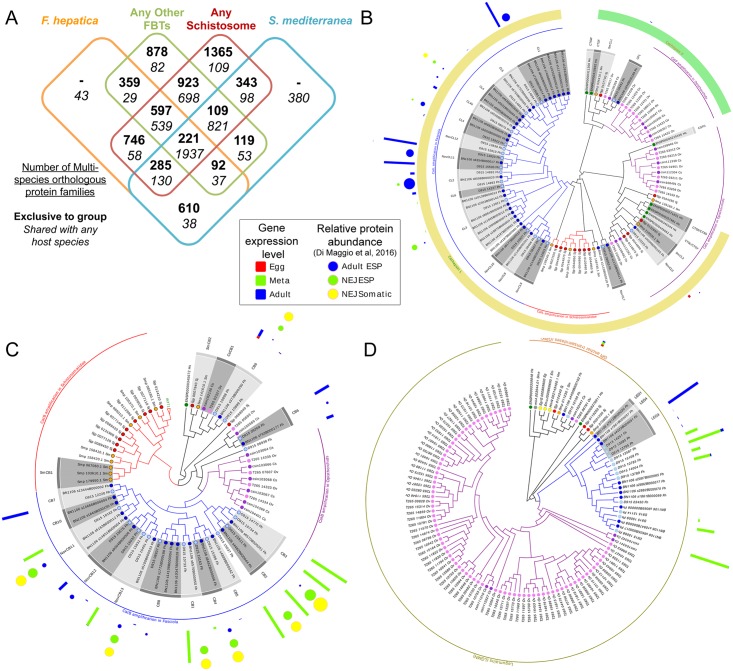Fig 1. Protein families in trematodes.
(A) A Venn diagram demonstrating the phylogenetic distribution of orthologous protein families among the trematode species analyzed (B) Differential amplification of cathepsins L and F in trematodes. A maximum likelihood tree of the genes annotated as members of the C1A protease family from trematodes shows that while a single set of cathepsins F are detected in Schistosomes and F. hepatica strains, an expansion of cathepsins F is observed in O. viverrini and C. sinensis (green arch). Similarly, the cathepsins L-like of the trematodes (yellow arch) show a basal node more related to the mammalian enzymes and several independent amplifications in schistosomes, opistorchiids and Fasciola. Most known cathepsins variants are supported by expression data in different stages (red, green and blue bars), and proteomic data (yellow, green and blue dots) from a recent report [34]. Several putative novel variants are indicated, most of them not expressed at the stages analyzed. (C) Cathepsin B subfamily of the C1A protease family. A basal cathepsin B node and differential expansions in schistosomatids (red arch), fasciolids (blue arch) and opisthorchiids (purple arch) is observed. As in cathepsins L novel isoforms are identified, some of them supported by expression data. (D) Legumain is differentially amplified in food borne trematodes. Maximum likelihood tree of the genes annotated as members of the C13 protease family. While a single gene corresponding to the glycosyl-phosphatidyl-inositol anchor transamidase exists in all trematodes, amplification of the legumains was evident in the food borne trematodes F. hepatica, C. sinensis and O. viverrini, but not in the blood flukes S. mansoni and S. japonicum. These amplification events are independent in the different lineages. Species included in the tree are color coded (human, emerald dots, planaria (grey) cestodes (yellow) S. japonicum (dark red) S. mansoni (orange) C. sinensis (purple) O. viverrini (pink), F. hepatica Oregon strain (sky blue) F. hepatica Liverpool strain (navy).

